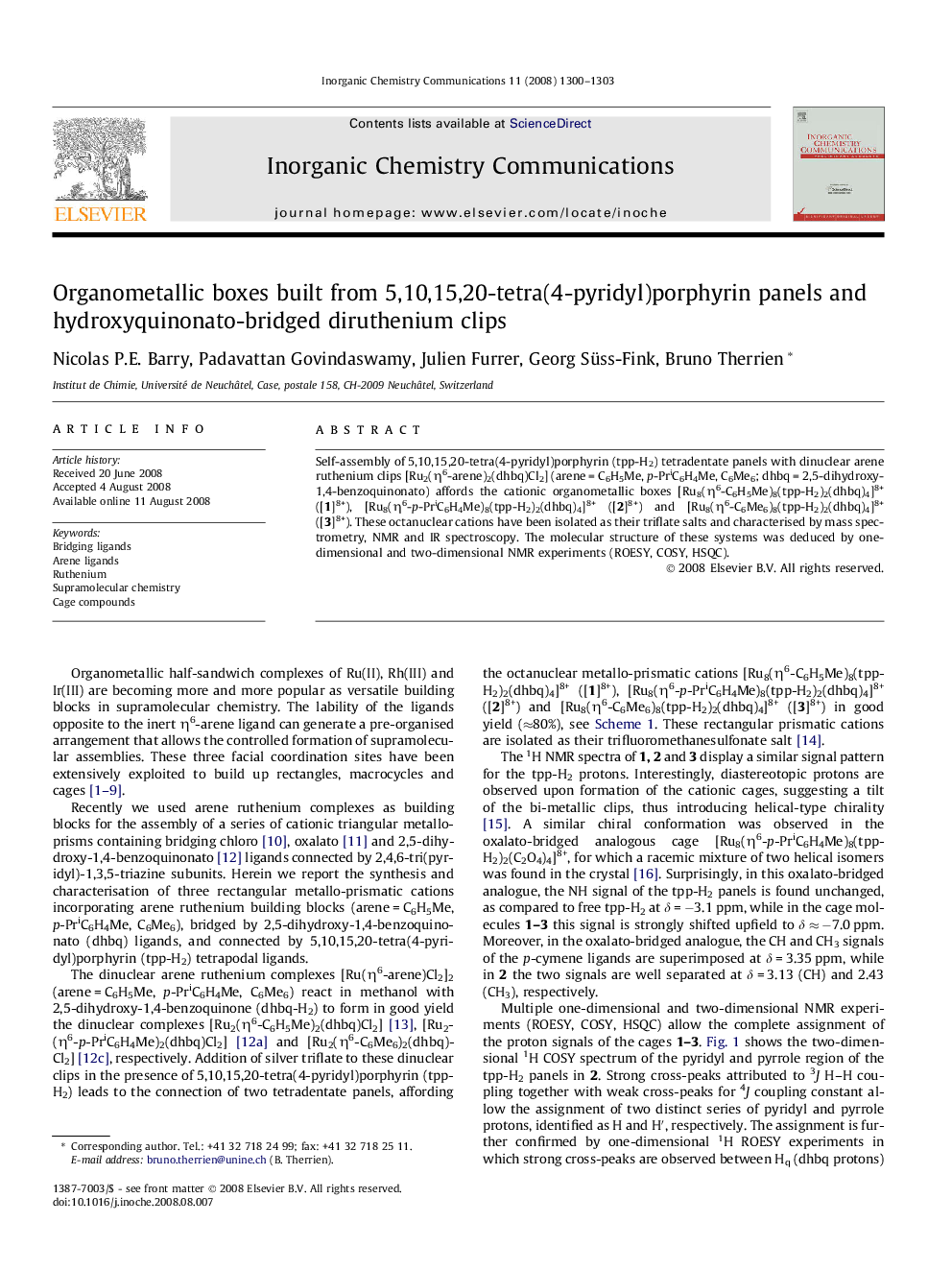| کد مقاله | کد نشریه | سال انتشار | مقاله انگلیسی | نسخه تمام متن |
|---|---|---|---|---|
| 1306506 | 975091 | 2008 | 4 صفحه PDF | دانلود رایگان |

Self-assembly of 5,10,15,20-tetra(4-pyridyl)porphyrin (tpp-H2) tetradentate panels with dinuclear arene ruthenium clips [Ru2(η6-arene)2(dhbq)Cl2] (arene = C6H5Me, p-PriC6H4Me, C6Me6; dhbq = 2,5-dihydroxy-1,4-benzoquinonato) affords the cationic organometallic boxes [Ru8(η6-C6H5Me)8(tpp-H2)2(dhbq)4]8+ ([1]8+), [Ru8(η6-p-PriC6H4Me)8(tpp-H2)2(dhbq)4]8+ ([2]8+) and [Ru8(η6-C6Me6)8(tpp-H2)2(dhbq)4]8+ ([3]8+). These octanuclear cations have been isolated as their triflate salts and characterised by mass spectrometry, NMR and IR spectroscopy. The molecular structure of these systems was deduced by one-dimensional and two-dimensional NMR experiments (ROESY, COSY, HSQC).
Self-assembly of 5,10,15,20-tetra(4-pyridyl)porphyrin tetradentate panels with dinuclear arene ruthenium clips [Ru2(η6-arene)2(dhbq)Cl2] (arene = C6H5Me, p-PriC6H4Me, C6Me6; dhbq = 2,5-dihydroxy-1,4-benzoquinonato) affords the cationic organometallic boxes of the general formula [Ru8(η6-arene)8(tpp-H2)2(dhbq)4]8+. These cationic cages are isolated as their triflate salts and characterised by mass spectrometry, NMR and IR spectroscopy. The molecular structure was deduced by one and two-dimensional NMR experiments.Figure optionsDownload as PowerPoint slide
Journal: Inorganic Chemistry Communications - Volume 11, Issue 10, October 2008, Pages 1300–1303